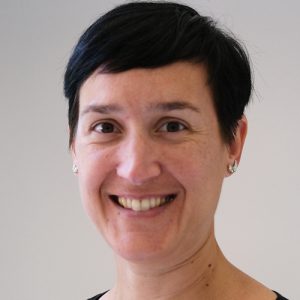Join ScitoVation’s PMPK Division Manager, Marjory Moreau, PhD, on Dec. 8 as she shares her presentation and research related to the capabilities of in vivo extrapolation (IVIVE).
| Title: | An online interface for in vitro to in vivo extrapolation in HepaRG cells |
| Presented by: | Marjory Moreau, PhD, Manager of ScitoVation’s PBPK Division |
| When: | Dec. 8, 10:00 EST |
Abstract
In vitro to in vivo extrapolation (IVIVE) is a valuable tool in converting active concentrations from an in vitro assay to a human equivalent dose that would be expected to produce internal plasma concentrations in an exposed person equal to the active concentration from the in vitro study. This information can be useful for informing chemical safety. For example, the equivalent human exposure can then be compared to an estimated exposure to obtain a margin of exposure (MOE). HepaRG is a unique and well-established hepatic cell system able to produce mature human hepatocytes from hepatic progenitor cells. HepaRG is an attractive system for mimicking in vivo metabolism and toxicology evaluation. We created an interface for using the principles of pharmacokinetics to translate data from experiments carried out using the HepaRG culture model to an equivalent human exposure, through IVIVE. This graphical interface uses metabolic clearance derived from HepaRG cells to estimate human intrinsic clearance. The interface also extrapolates in vitro measures of bioactivity estimated in HepaRG cells exposed to chemicals into equivalent applied dose in vivo.
About Marjory Moreau
 Dr. Marjory Moreau is the manager of the PMPK division at ScitoVation. Dr. Moreau’s research focuses on support and advance new human systems biology-based approaches to chemical safety assessment. This work combines research on in vitro biokinetic modeling, physiologically based pharmacokinetic modeling and quantitative in vitro to in vivo extrapolation modeling to translate non-animal and human cell-based toxicity testing results to safe human exposure estimates to support human health assessment.
Dr. Marjory Moreau is the manager of the PMPK division at ScitoVation. Dr. Moreau’s research focuses on support and advance new human systems biology-based approaches to chemical safety assessment. This work combines research on in vitro biokinetic modeling, physiologically based pharmacokinetic modeling and quantitative in vitro to in vivo extrapolation modeling to translate non-animal and human cell-based toxicity testing results to safe human exposure estimates to support human health assessment.
She completed her PhD in Public Health with a specialty in Toxicology at the University of Montreal, working on the quantitative relationship between exposure to BaP, the temporal evolution of biomarkers of exposure and the appearance of early biological alterations.
She finished her postdoctoral fellowship under the supervision of Andy Nong at Health Canada Computational Toxicology Laboratory. Marjory’s research work was supported by the Natural Sciences and Engineering Research Council of Canada (NSERC) which focused on the application of pharmacokinetic models and high throughput screening results to evaluate the potential hazards of chemicals. This work also combined the in-vitro to in-vivo extrapolation approach with biomonitoring studies to bring fourth into a public health context.
About SaferWorldbyDesign
This webinar will be hosted by and presented in collaboration with SaferWorldbyDesign, safety assessment platform supporting the design and testing of intelligent, safer products using new approach methods in toxicology and next generation risk assessment.
